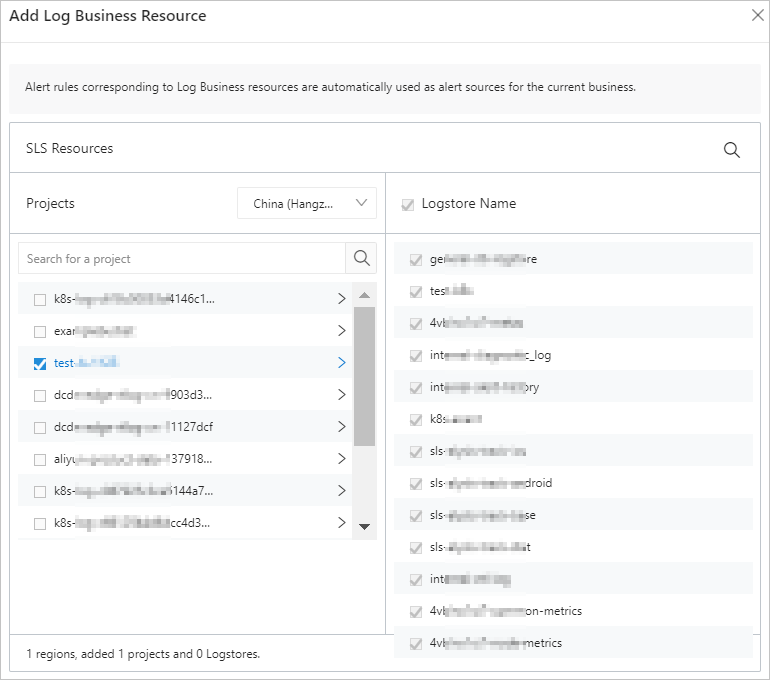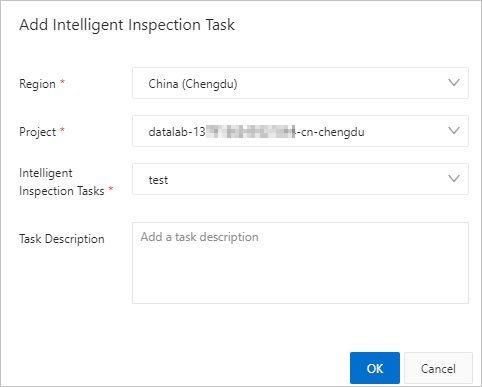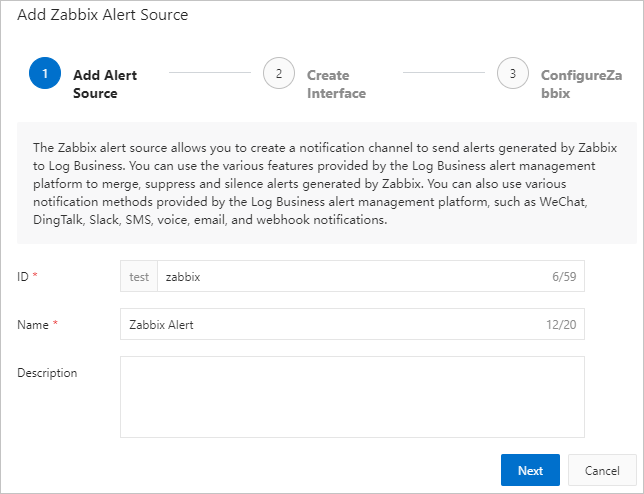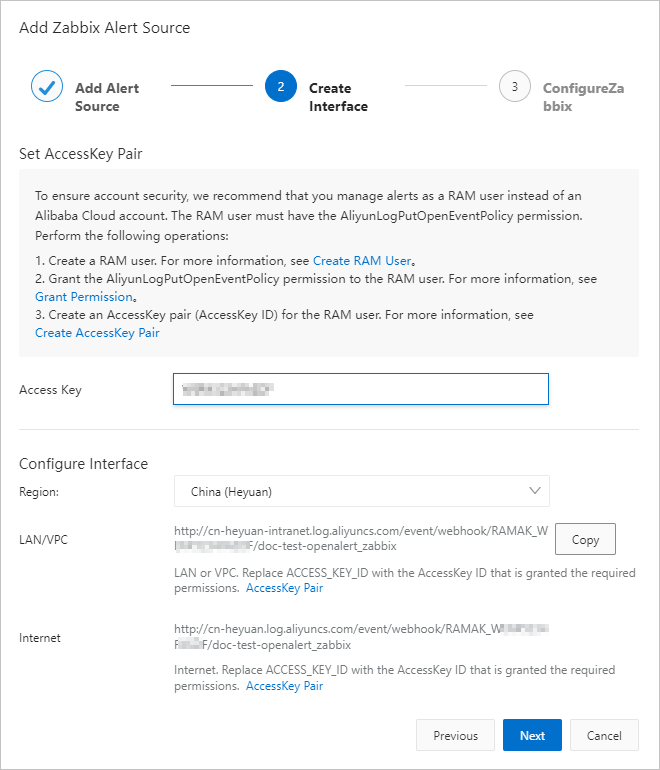Simple Log Service Alert OpsCenter allows you to manage alerts by business. You can add one or more alert sources that you want to monitor to a business for unified management. This topic describes how to integrate alerts. To integrate alerts, you must add a business, add alert sources, configure an alert monitoring rule, and then configure a business policy.
Step 1: Add a business
Log on to the Log Service console.
On the Intelligent O&M tab of the Log Application section, click Alert OpsCenter.
On the Alert OpsCenter page, click Add New Business.
In the Add Business dialog box, set the Business ID and Business Name parameters and click OK.
Step 2: Add alert sources
On the Alert OpsCenter page, find the business that you want to manage and click the ID of the business.
In the left-side navigation pane, choose .
On the Integration page, click Add in the card of an alert source that you want to integrate.
Configure an alert source.
Alert OpsCenter supports the following types of alert sources:
Log Business resources
In the Add Log Business Resource panel, select the projects that you want to add and click OK.

Intelligent inspection
In the Add Intelligent Inspection Task dialog box, select a region, a project, and an intelligent inspection task. Then, click OK.

Third-party alert sources
In the Add Alert Source step, specify the ID and name of the alert source. Then, click Next.

In the Create Interface step, set the Access Key and Region parameters.
Set the Access Key parameter to the AccessKey ID of an Alibaba Cloud account or a RAM user based on your business requirements. For information about how to obtain an AccessKey ID, see Appendix: Obtain an AccessKey ID.
Then, move the pointer over the blank area next to the text box and copy the full URL, domain name, or subpath of the webhook URL. The URL is required when you configure parameters on a third-party alerting platform.

Complete the required settings on the corresponding third-party alerting platform.
Step 3: Configure an alert monitoring rule
If you add Log Business resources, you must configure an alert monitoring rule for the resources.
On the Log Business Resources tab of the Integration page, find the alert source and click Alert Rules in the Actions column.

On the Alert Rules/Incidents tab, configure an alert monitoring rule.
You can use a built-in alert monitoring rule of Simple Log Service. Find the alert monitoring rule and click Enable.
If built-in alert monitoring rules do not meet your business requirements, you can click Create Alert to create a custom alert monitoring rule. For more information, see Create an alert monitoring rule for logs.
Step 4: Configure a business policy
In the left-side navigation pane, choose .
In the Business Policy section, select a configuration mode for the business policy.
Click Modify Settings.
You can select Enable, Disable, or Mixed based on your business requirements. The following table describes the preceding modes.
Mode
Description
Enable
In Enable mode, the alert policy and the action policy that are configured for the current business are applied.
If an alert source in the business is associated with an available alert policy and an available action policy in Alert Center, the policies that are associated with the alert source are disabled.
Disable
In Disable mode, the alert policy and the action policy that are configured for the current business are not applied.
If an alert source in the business is associated with an available alert policy and an available action policy in Alert Center, the policies that are associated with the alert source are enabled.
Mixed
If an alert source in the business is associated with an available alert policy and an available action policy in Alert Center, the policies that are associated with the alert source and the policies that are configured for the business are all enabled.
Click Save.
In the Notification Management section, configure an alert policy and action policy.
Simple mode
If you select Simple Mode, Simple Log Service uses the built-in alert policy sls.builtin.dynamic to manage alerts. You need only to configure an action group. For more information, see Notification methods.
After you configure the action group, Simple Log Service automatically creates an action policy named
Rule name-Action policy.Advanced mode
If you select Advanced Mode, you can configure an alert policy and an action policy. An alert policy includes the following child policies: route consolidation, suppression, and silence. An action policy includes the following settings: notification method, alert escalation, and notification method quota. For more information, see Create an alert policy, Create an action policy, and Configure notification quotas.